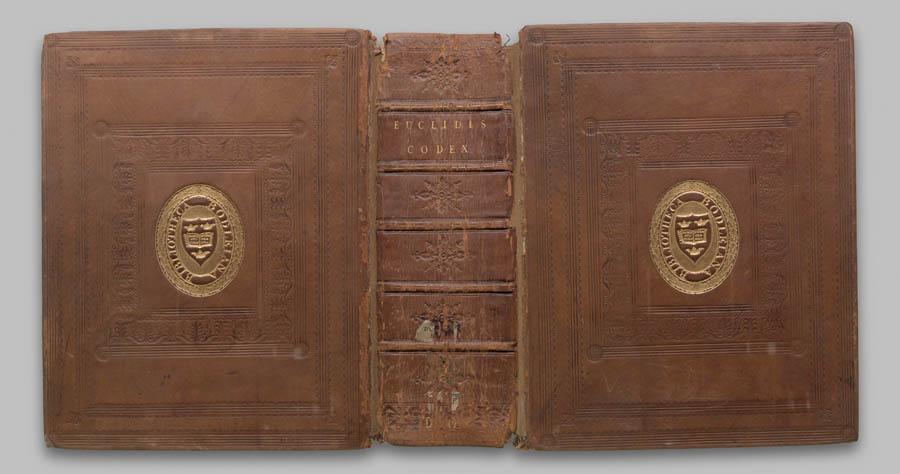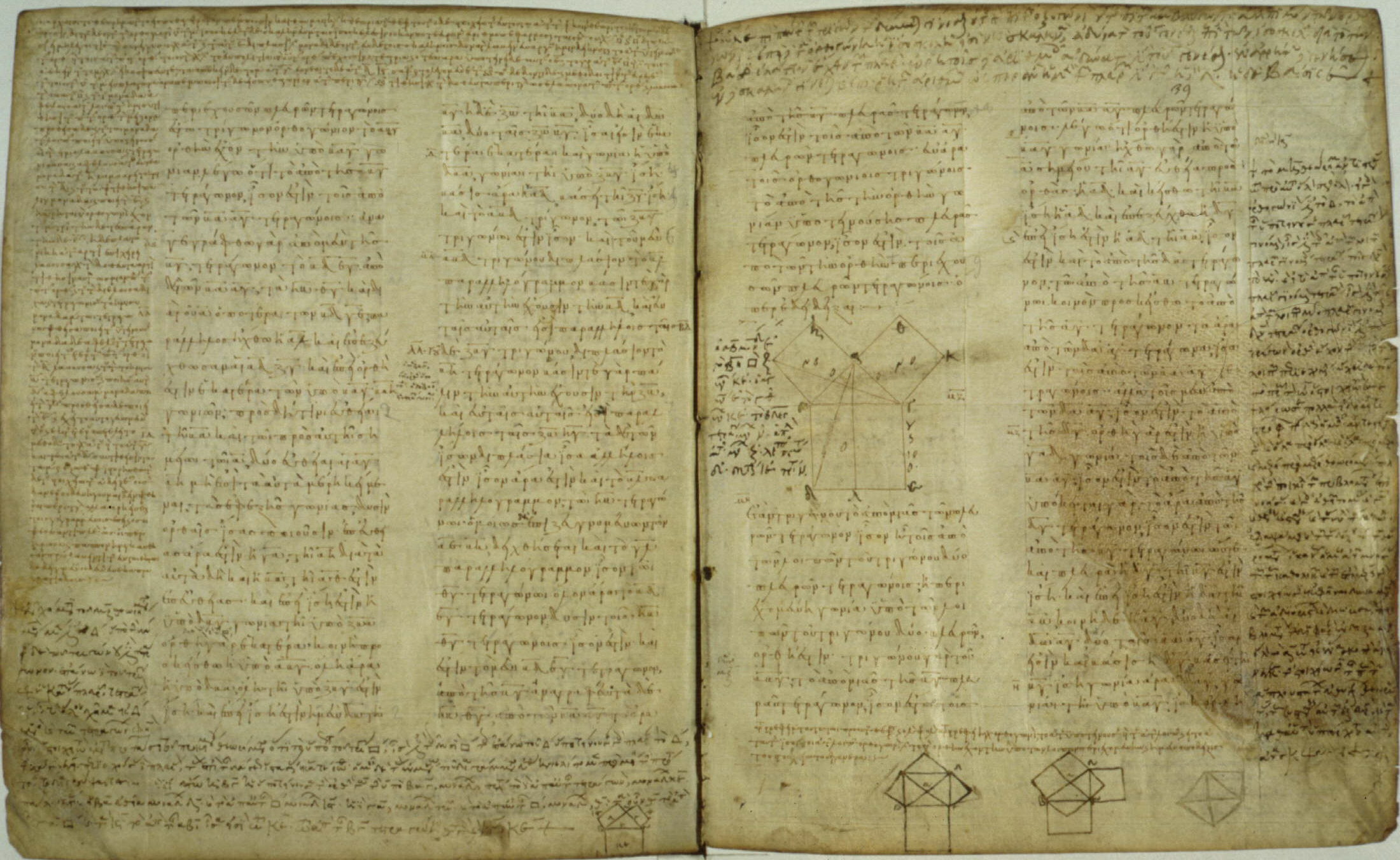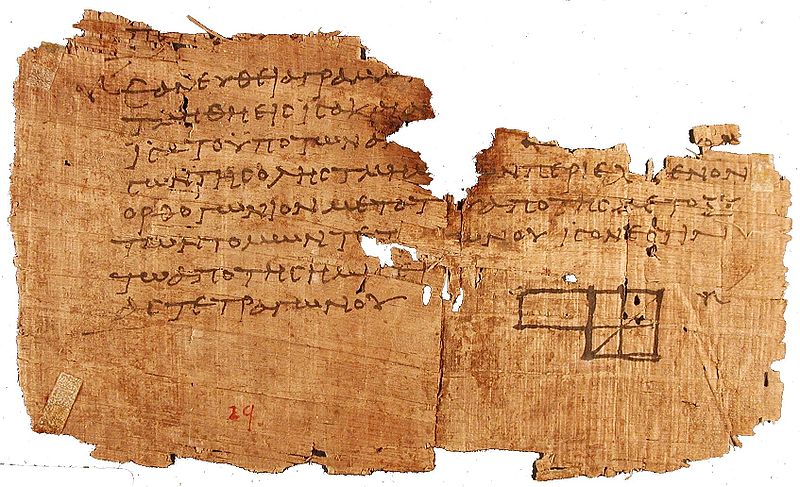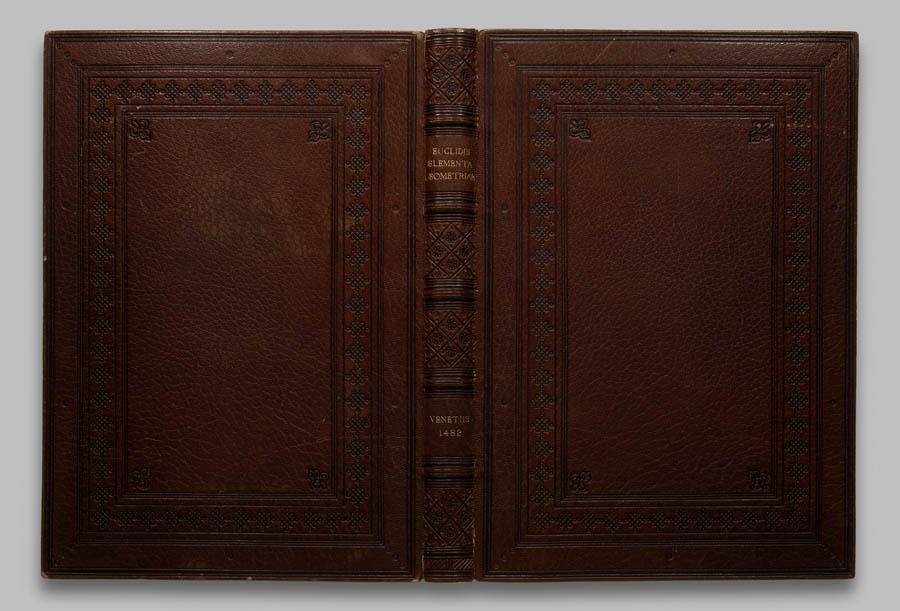Euclid's Elements - A 2,500 Year History
Bob Gardner
East Tennessee State University
Department of Mathematics and Statistics
Johnson City, TN 37614
Other Translations of The Elements

Bodleian Manuscript (888 CE)
Image from: http://www.claymath.org/euclid/
The Bodleian manuscript dates from 888 CE. This manuscript contains Books I to XV of the Elements with many "scholia," or explanatory comments.
 The Clay Mathematics Institute website declares this edition "the earliest 'complete' manuscript of Euclid's Elements and, according to the Bodleian Library exhibition catalogue, it is the oldest manuscript of a classical Greek author to bear a date." It "has been preserved in the Bodleian Library, Oxford, England since 1804, was written on parchment in Constantinople." A complete digital copy is available online on the Clay Mathematics website
(http://www.claymath.org/euclid/).
The Clay Mathematics Institute website declares this edition "the earliest 'complete' manuscript of Euclid's Elements and, according to the Bodleian Library exhibition catalogue, it is the oldest manuscript of a classical Greek author to bear a date." It "has been preserved in the Bodleian Library, Oxford, England since 1804, was written on parchment in Constantinople." A complete digital copy is available online on the Clay Mathematics website
(http://www.claymath.org/euclid/).

Vatican Manuscript Number 190 (10th Century)
Image from:
http://www.ibiblio.org/expo/vatican.exhibit/exhibit/d-mathematics/Greek_math.html
Vatican Manuscript Number 190. This dates from the 10th century.
and contains the Books I to XII of Elements with scholia, then Marinus' commentary on the Data with scholia. Then the so-called "Books XIV and XV" of the Elements are presented, followed by
three books and part of a fourth of a commentary by Theon. Though comments by Theon are appended, research reveals that the main text is more ancient than other available versions which show an influence of modification by Theon [Heath, page 46].
Other manuscripts from this era include:
- Manuscript XXXVIII, 3 of the Laurentian Library in Florence, Italy which dates from the 10th century, includes Books I-XV, Optics, and Phaenomena.
- Manuscripts 18 and 19 of the Communal Library in Bologna, Italy from the 11th century includes Books I-XIII and Data.
- The Viennese Manuscript from the 12th century which includes Books I-XV, Optics, and Phaenomena.
- Two Paris Manuscripts from the 12th century.

The Oxyrhynchus Papyrus
Image from:
http://scientists.penyet.net/euclid-the-father-of-geometry.html
A few ancient fragments of papyrus exist which contain parts of The Elements. One of the oldest is called the Oxyrhynchus Papyrus and dates to around 100 CE. Here, we see a diagram from Book II, Proposition 5.

The First Printed Elements
Image from:
http://www.historyofscience.com/G2I/timeline/index.php?category=Mathematics+%2F+Logic
The first printed version of The Elements appeared in 1482 in Venice. The text was based upon a translation from Arabic to Latin presumably made by Adelard of Bath in the 12th century, edited and annotated by Giovanni Compano.
It included over 400 figures.
Go to the next section: The Elements in English.
Last revised July 17, 2023.





